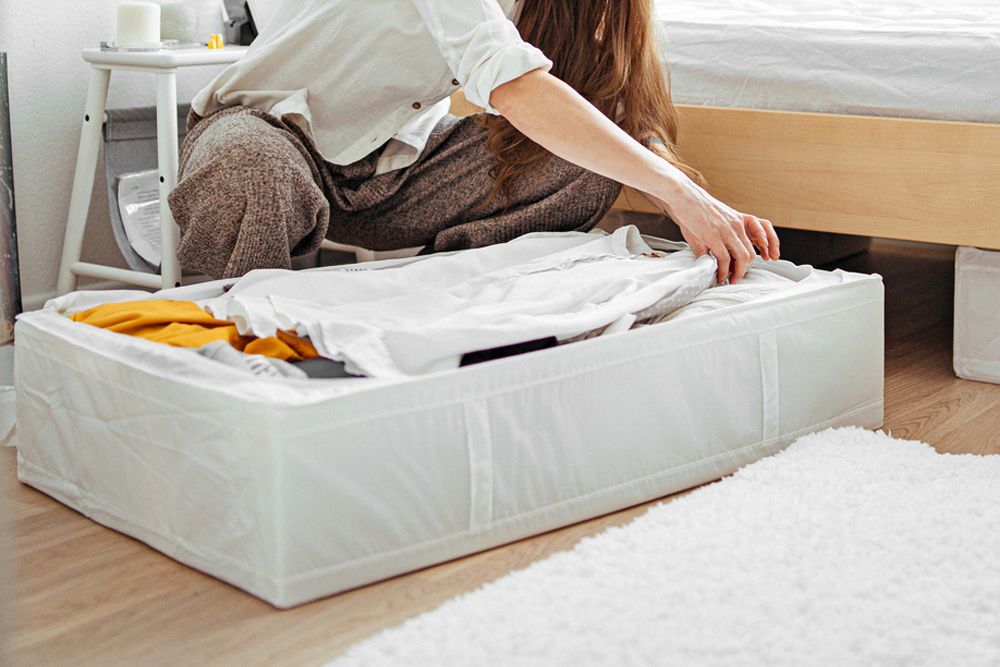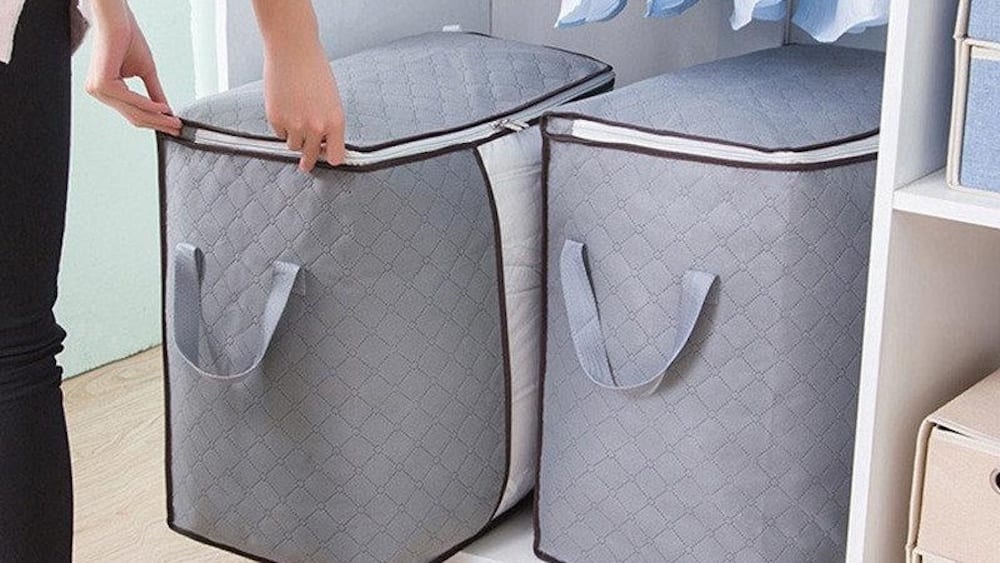A lucky woman is one who owns a whole walk-in closet to keep its set of fashion treasures for all seasons. However, a practical woman prefers storing seasonal clothing in a storage unit.
Unfortunately, we don’t all have big enough property to have a roomy space for our clothes, accessories, and shoes. This is why using professional storage facilities might reduce the chaos inside your wardrobe if you live in a region with distinct seasons.
Moreover, if you keep your seasonal clothing items finely stored, you can have them intact, fresh, with bright shades, sleek and in top condition for a longer time.
We all know how unpleasant it is to finally figure out what dress to wear on a hot date, but eventually to find it shabby and wasted at the bottom of your previous season’s wardrobe drawer.
So let’s put an end to this total mess and store the seasonal clothing in storage facilities like pros.
Start with the organisation to eliminate the chaos factor
Before you collect a random heap of clothes to put inside a professional storage unit, think about the most intelligent way to sort out the different items you’ve got.
For example, right now, you might think that you will never wear this dress again, but since it’s suitable for the current season, why deprive yourself of the chance to use it for all those days labelled as “I have nothing to put on!”.
It is way better to sort your clothing items strictly depending on their season. Have four (for each season) or two groups (for warm or cold days) of clothes depending on your home’s vacant space and the storage unit size and price you can afford.
On mandatory, clean your clothes before putting them in storage
It’s a huge mistake to take your clothes to the storage facilities without making sure that they are in good condition. The dirtier they are right now, the worse they will look when you return to replace winter clothes with summer designs.
In addition, you will lose a lot of time washing and ironing them later. Instead, collect the items you will store professionally, take care of their hygiene and overall look (sew a missing button, if you have to, for instance) and then pack them in boxes and bring them to the storage module.
Choose the proper storage containers for your items
What’s the best material to protect your beloved clothes from direct sunlight damage risks or humidity?
Well, first of all, these negative factors can be avoided easily by renting a climate-controlled unit. Second, it’s all about each product label with maintenance instructions to count on. Ordinary T-shirts and pieces of denim won’t need some delicate protection.
Unfortunately, we cannot say the same for your luxurious collection of genuine leather and natural coats.

Here are some guides to use when selecting a container for a concrete clothing type depending on their materials:
- When using a plastic box? They are ok for easy-to-be-stored items. On the other side, plastic will keep away pests. The transparent box is very convenient for clothes you usually need urgently to spot them at once (for instance, if you regularly visit corporate cocktails and have luxurious dresses for these occasions, as well as if you often go on summer/ski vacations and your equipment at hand round the whole year). Yet, these transparent white boxes will let the direct sunlight reach your clothes. To avoid fading of their shades, consider black-coloured plastic boxes.
- What about cardboard boxes? If it’s not a collection of woollen winter sweaters or other natural material items, you can use them without concerns. It’s good to know, though, that cardboard is not a safe enough material for anti-pest or anti-mould protection. If you keep the boxes outdoors or in an ordinary storage unit with no climate-controlled functions, avoiding them is better.
- Textile bins – yes or no? These are good for all delicate materials because they are breathable and secure to normal air ventilation. Silk and cashmere clothes are ideal for these bins. Yet, be aware that they are more expensive than the other two options.
Pack your clothes in groups for more convenience
Now that you have the heap of all clothes for the cold or hot days, it’s time to go on with the sorting. You are not ready with the grouping task yet. To access each clothing item as conveniently and fast as possible, you should know where it is.
We suggest you use the following strategy to sort out the clothes when packing them:
- Whose clothes are these? – Have boxes for you and such for your better half, as well as for each kid.
- What type of clothes are these? – Have a box for T-shirts, one for skirts, another for dresses and you name it.
- For what occasions are these? – If you mainly wear dresses, all your boxes will be labelled as dresses. How could you know which one has the designs for a night out or those for the summer beach days? Simply sort them out according to their style – formal, everyday, luxurious, etc.
- What colours are these? – An alternative to the previous sorting out tip is to group all your T-shirts by colours.
What not to do when you store clothes?
Now that you know about half of the golden rules in storing clothes professionally and seasonally, it’s high time for you to find out the Don’ts in this process:
- Don’t use vacuum bags. The thing is that with them, you will get your clothes in the same awful look as you get them when stuck inside your enormous wardrobe or under the bed.
- Don’t mix the different fabrics. Yes, you can write down this one more factor for sorting out your clothes while packing. Natural textiles need more air to breathe and will damage when stuck with your denim pants.
- Don’t put the most delicate and lighter items at the bottom. Instead, put all the heavy clothes like denim and leather items at the bottom.
- Don’t store items you are sure you will never wear again, including if they are old, worn out, damaged, and you name it.
How to protect your clothes from pests and moisture?
Clothing moths and mould are the worst enemies of your stylish clothes when stored anywhere. So taking some preventive measures to protect them from these risks is essential.
Here’s how to avoid a high level of humidity and pests issues if you don’t opt for the bit more expensive climate-controlled storage units as they have the required secure settings:
- Use lavender accessories to keep the pests away;
- Wait for the clothes to dry out naturally and then pack them for storage;
- Consider investing in commercial moisture absorbers to install in the storage unit or each box full of clothes;
- Get insurance from the company.
Some additional tips when you put your clothes in storage
Last but not least, here’s one last selection of tips to consider before you decide to seasonally store your clothing items in the local professional storage facilities:
- Decide what to fold and what to hang. Of course, hanging is critical for outwear and delicate fibres such as silk, sateen, and you name it;
- Clothes that can be folded but quickly get wrinkles can be instead rolled as within the time folding will cause marks on the textile;
- Wire hangers are not reliable as the more time they are used, the more flexible to fold and stretch they become;
- Use the labelling system to know what’s inside each box.
Conclusion
Keeping your clothes in a professional storage unit for the next season saves you space at home and money in your pocket.
According to the statics, most of us buy new clothing items these days not because of new fashion needs but because we don’t store the current possessions we’ve got the right way.





